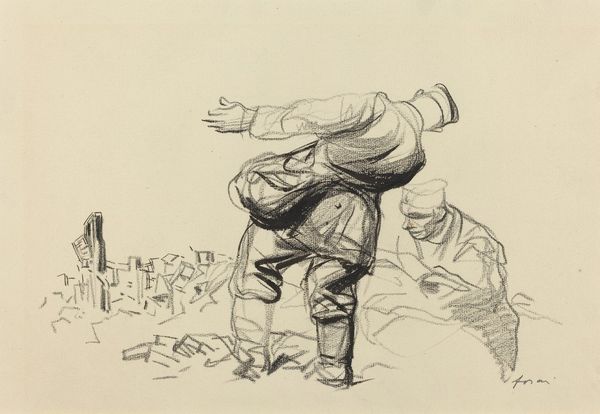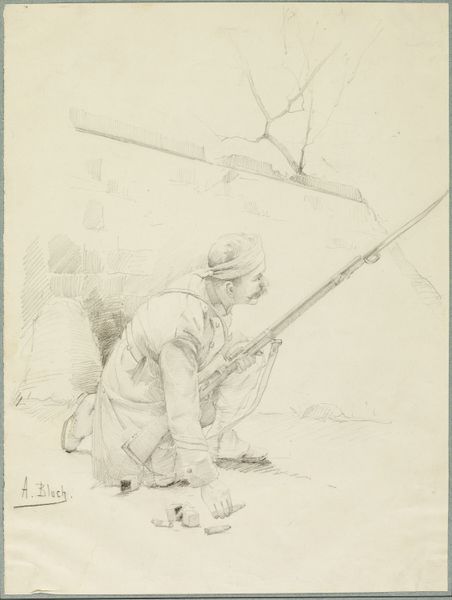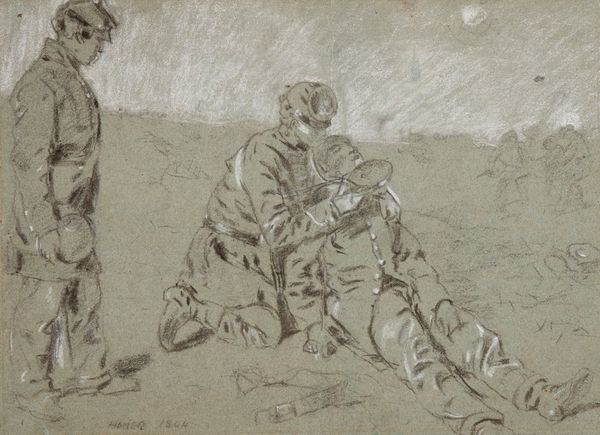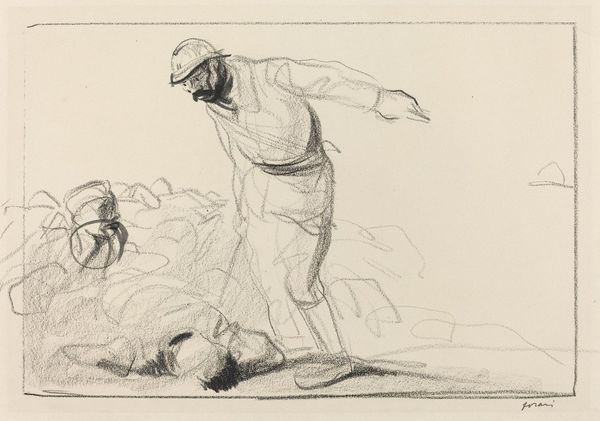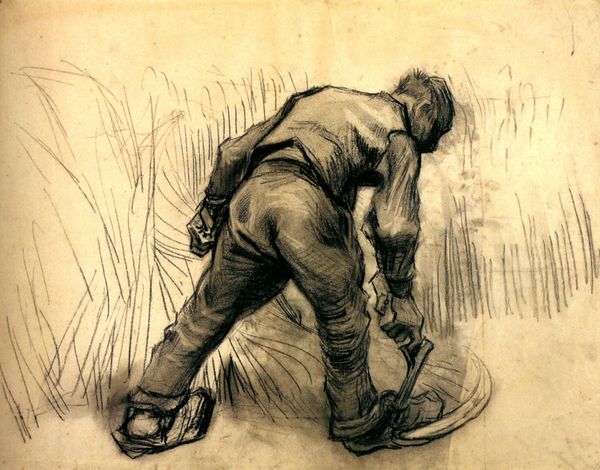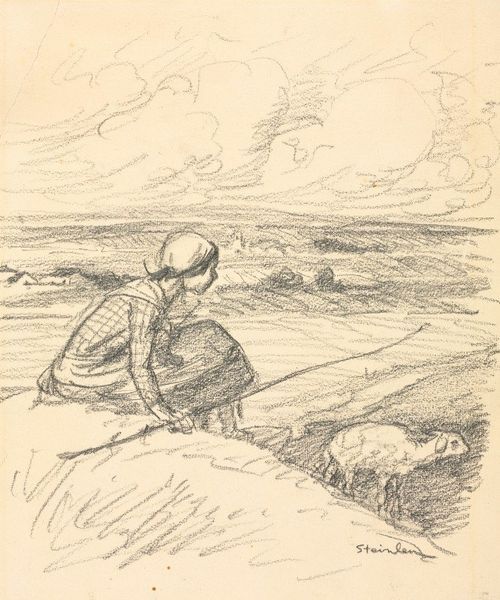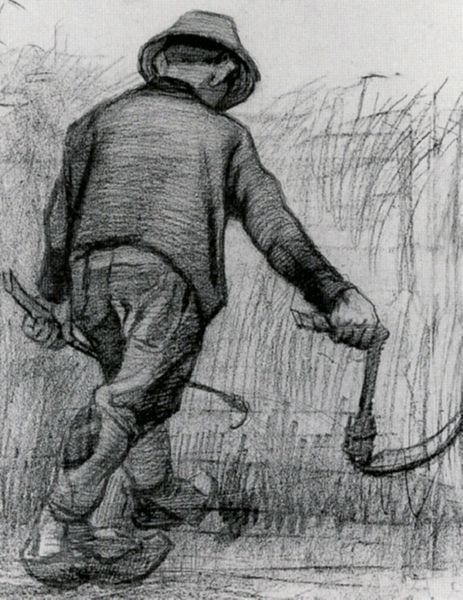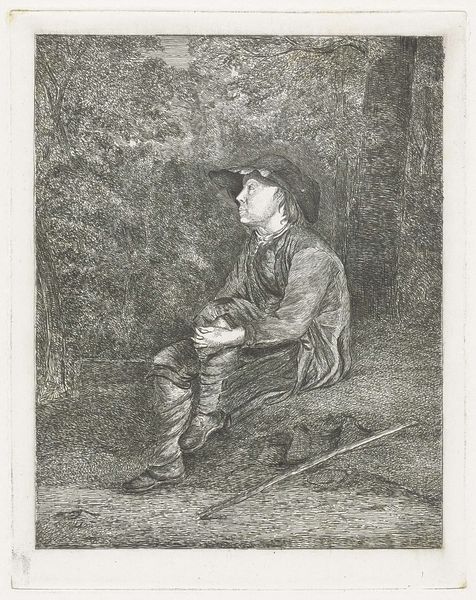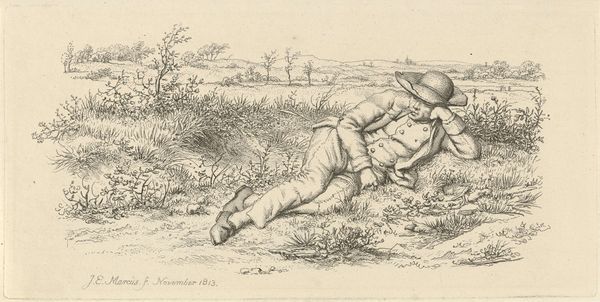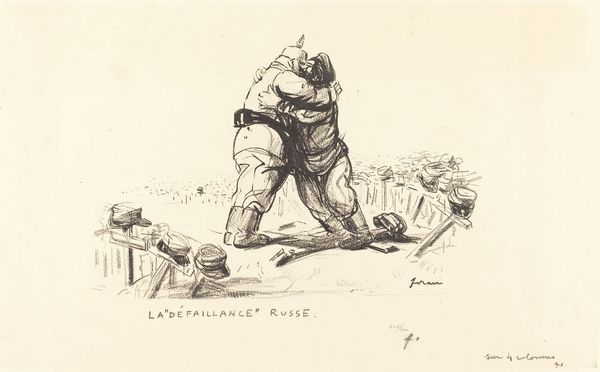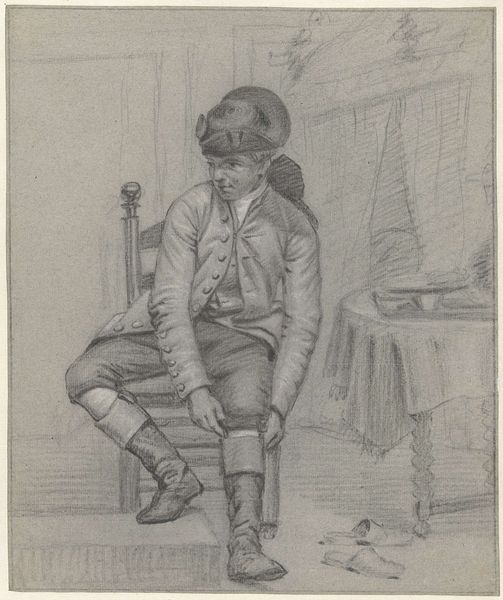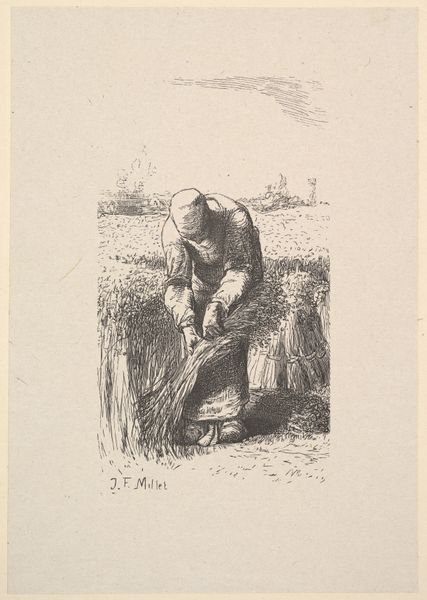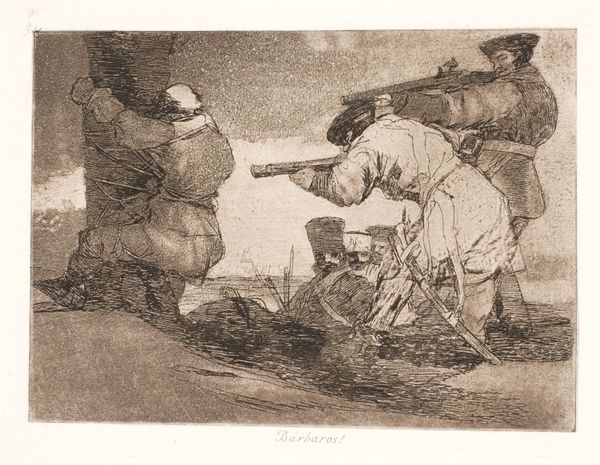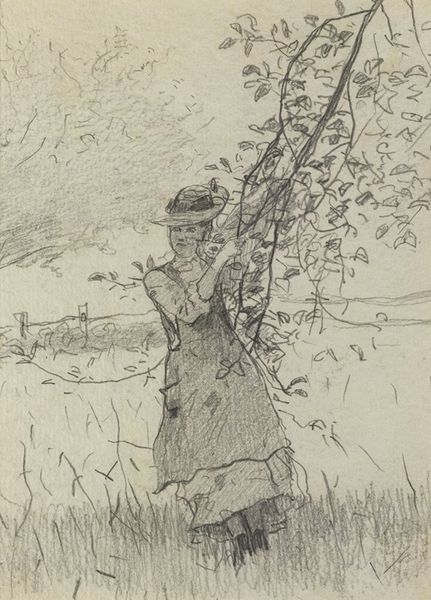
drawing, pencil
#
drawing
#
landscape
#
pencil drawing
#
romanticism
#
pencil
#
genre-painting
#
realism
Dimensions: height 190 mm, width 276 mm
Copyright: Rijks Museum: Open Domain
Curator: Jacob Ernst Marcus created this pencil drawing, "Kneeling Man Filling a Jug in a Ditch," sometime between 1784 and 1826. It's currently housed here at the Rijksmuseum. Editor: My first thought is how subtly melancholic it is. The pale tonality and downward gaze of the figure impart a sense of quiet resignation. Curator: It is indeed a genre scene rendered with incredible delicacy. The artist's choice of pencil allows for nuanced gradations of light and shadow. The type of pencil and the paper used give clues to the culture around drawing at the time. Was this drawing done in situ, or back at the studio, remembering a scene, for instance? The materials themselves are part of the story. Editor: Absolutely. And the jug itself— a classical form in this everyday context— evokes deeper, perhaps archetypal, connections to water, nourishment, and labor. Water is essential for every class in society, of course, but filling the jug also implies that water access requires work from common laborers. Curator: Yes, there's an undeniable class consciousness subtly woven in. This wasn't just about picturesque landscapes; it’s about showing the ordinary, the back-breaking labor involved in sustaining society, even for something as simple as water. Editor: And even the act of kneeling – a posture of deference or humility – amplifies this reading, making the symbolism more poignant. There's a spiritual connotation here, perhaps unintentional, that elevating hard, physical labor through the symbol of fetching for this necessary natural source will lead to further peace or goodness. Curator: You've got me thinking more about the role of fences, which in agricultural terms both mark ownership of lands and provide protective boundaries from animals. I can imagine that water was crucial for sustaining cattle and growing produce at the time. Editor: I concur that seeing this image through the context of ownership really illuminates what Jacob Ernst Marcus could be subtly communicating through it! What have we learned here today? Curator: The value in studying historical art through the lens of medium and class consciousness really unlocks hidden value.
Comments
No comments
Be the first to comment and join the conversation on the ultimate creative platform.
